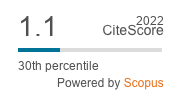The diffusion of condominiums in Latin American metropolises. The example of Santiago de Chile
Keywords:
Urban structure, gated communitis, fragmentationAbstract
In the Metropolitan Area o Santiago de Chi e we can observe since the 1990s an increasing dispersion of barrios privados that nowadays we can find in near y a peripherical comunas of Santiago. The artic e attempts to analyze the causes and consequences of this process. One actor, without doubt, is the globalization, expressed in neoliberal economic politics. But there are more actors o importance. The improvement o the transport infrastructure is to be regarded as a precondition. On the other hand, the big rea estate companies are power u actors in the urban development. There are, the wishes and decisions o buyers o rea estate are influenced by publicity campaigns. A typica lifestyle e of family living in gated communities is emerging. The resulting urban structure can be characterized as fragmented with a progressive separation o functions and social spaces.
Downloads
References
ADIMARK. Mapa socioeconómico de Chile. Santiago, 2004. Fn Internet http:// www. adi m ark. c /down oad2. cgi / in orme%20mapa%20socioeconómico%20de
%20chi e.pd ?id=82(.
ARIZAGA, M. Murallas y barrios cerrados. La morfología espacia de ajuste en Buenos Aires. Nueva Sociedad, 2000, n° 166, p. 22-32.
BÄHR, J. Santiago de Chile, Fine FaktorenanaKytische Untersuchung zur inneren Differenzierung einer lateinamerikanischen Millionenstadt. Mannheim: Selbstverlag des Geographischen Instituts der Universität, 1978.
CÁMARA DF LA CONSTRUCCIÓN. Estadística de la Construcción. Santiago. Varios años.
COY, M. & PÖHLER, M. Condominios fechados und die Fragmentierung der brasilianischen Stadt: Typen - Alteure - Folgewirkungen. Geographica Helvetica 57, 2002, n° 4, p. 264- 277.
HIDALGO, R. et al.: Los condominios y urbanizaciones cerradas como nuevo modelo de construcción de espacio residencial en Santiago de Chile (1992-2000). Scripta Nova, Revista Electrónica de Geografía y Ciencias Sociales, 2003, Vo . 7, nº (46 (123). En Internet http:// www.ub.es/geocrit/sn/sn-(46(123).htm
INE. Censo 2002 – resultados: Población y Vivienda. Santiago, 2003 (CD-Rom)
JANOSCHKA, M. WohKstand hinter Mauern: Private Urbanisierungen in Buenos Aires. Wien: Ver ag der Österr. Akad. d. Wiss., 2002 (ISR- Forschungsberichte, 28).
KOHLER, P. Gesch ossene Wohnkomp exe in Quito – Naturraum und recht iche Rahmenbedingungen a s Finlussgröße ür Verbreitung und Typisierung. Geographica Helvetica 57, 2002, nº 4, p. 278-289.
MEYER- KRIESTEN, K. & BÄHR, J. Condominios in Greater Santiago de Chile and their Impact on the Urban Structure. Die Frde 132, 2001, nº 3, p. 292-321.
MEYER- KRIESTEN, K. Aktuelle Entwick ungstendensen der lateinamerikanischen Stadt am Beispie Santiago de Chile. In STRUCK,
F. (Fd.) Ökologische und sozioökonomische Probleme in Lateinamerika. Passau: Selbstver agder Universität Passau, 2003, p. 57 – 69 (Passauer Kontaktstudium Erdkunde, nº 7).
MEYER- KRIESTEN, K.; PLÖGER, J. & BÄHR, J. Wandel der Stadtstruktur in Lateinamerika, Sozialräumliche und unktiona e Ausdi erensierungen in Santiago de Chile und Lima. Geographische Aundschau 56, 2004, nº 6, p. 30 – 36.
ORTIZ, J. y MORALES, S. Impacto socioespacial de las migraciones intraurbanas en entidades del centro y de nuevas periferias de Gran Santiago. FUAF, 2002, Vo . 28, n° 85, p. 171 – 185.
PRADILLA, F. Metrópolis y megalópolis en América Latina. Revista Interamericana de Planificación, 1998, n° 119/120, p. 194-212.
ROVIRA, A. Los barrios cerrados de Santiago de Chile: en busca de la seguridad y la privacidad perdidas. En CABRALES, L. (Coord.) latinoamérica: países abiertos, ciudades cerradas. Guadalajara: Universidad de Guadalajara – UNESCO, 2002, p. 351-369.
SABATINI, F. La segregación de los pobres en las ciudades: Un tema crítico para Chie. CIS Centro de Investigación Social, 2002, n° 2, p. 18-23.
SABATINI, F.; CÁCERES, G. y CERDA, J.:Segregación residencia en las principales ciudades chilenas: Tendencias de las tres últimas décadas y posibles cursos de acción. FUAF, 2001, Vo . 27, n° 82, p. 2(-42.
SALCEDO, R. Lo local, lo global y el Mall: La lógica de la exclusión y la interdependencia. Revista de Geografía Norte Grande, 2003, nº 30, p. 102-115.
SALCEDO, R. and TORRES, A.: Gated Communities in Santiago: Wa or Frontier? InternationaK JournaK o5 Urban and AegionaK Aesearch, Vo . 28.(, 2004, p. 27-44.
SCHOLZ, F. Perspektiven des „Südens” im Zeita ter der G oba isierung. Geographische Zeitschri5t 88, 2000, nº 1, p. 1-20.
SVAMPA, M.: "os que ganaron - La vida en Kos countries y barrios privados. Buenos Aires: Bib os, 2001.
VIDAL, R.: Reconfiguración de a peri eria de Gran Santiago. Revista de Geografía Norte Grande, 2002, nº 29, p. 39-55






